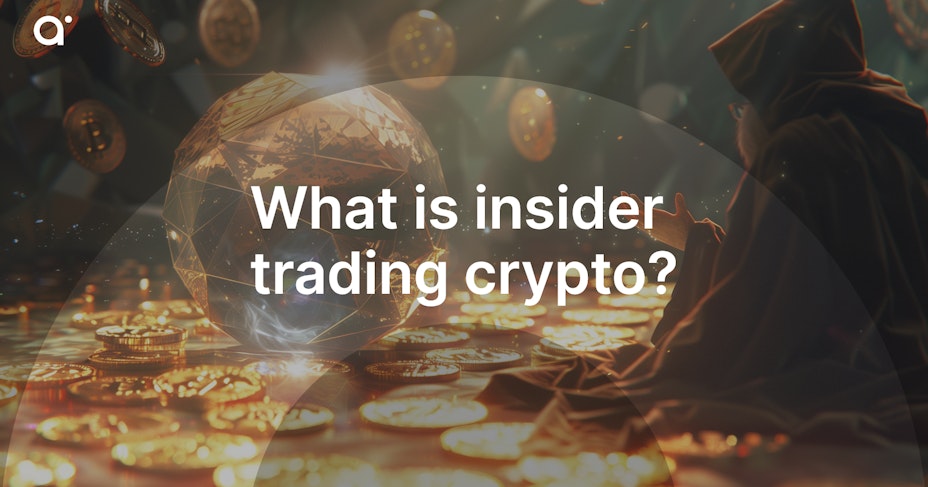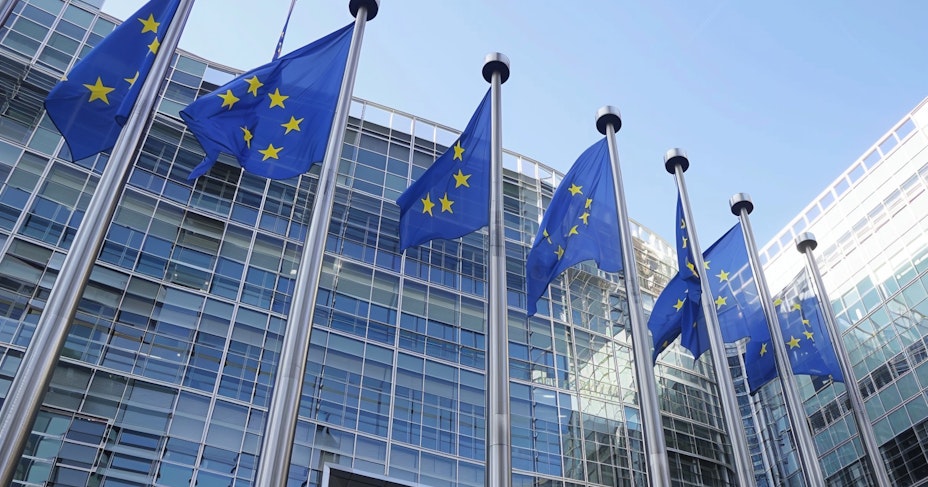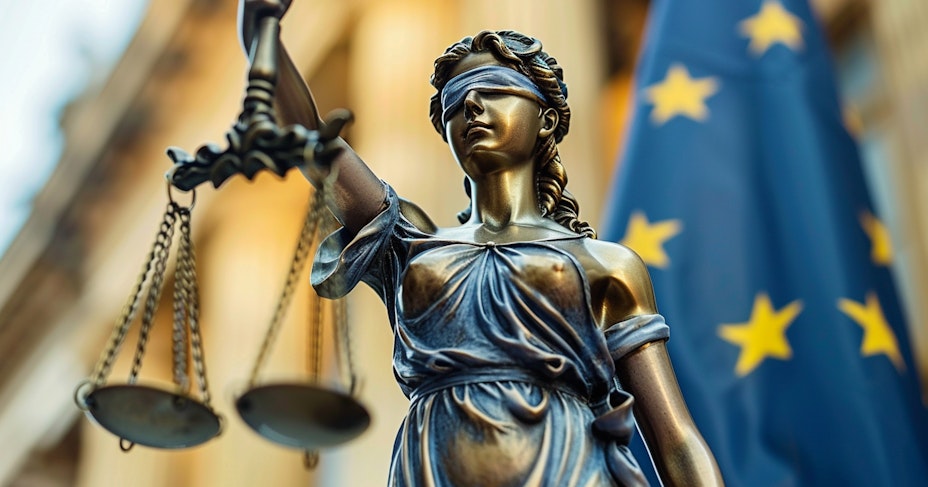What is insider trading crypto
- 14 minute read

Insider trading in the world of crypto is a derivative of the stock market. The lessons learned in the stock sector are being applied more and more in the world of cryptocurrencies and blockchains.
This article will attempt to highlight all the ins and outs of insider trading.

- Trading with un-released information is also known as insider trading and is prohibited by law due to market abuse
- In fair trade, all market participants use the same numbers to reach a decision on buying or selling
- EU's European Securities and Market Authority (ESMA) works against insider trading in traditional financial markets
- The SEC was created shortly after the Great Depression, in which insiders shorted their own companies, based on insider information, which was then banned.
- The Securities Act and the Securities Exchange Act of 1933 and 1934 to regulate the capital markets are still in effect today
- The Crypto equivalent in the EU is called MiCA and regulates almost all elements in the field of cryptocurrency trading, including insider crypto trading
- Well-known phenomena from crypto trading include Pump and Dump and Rug Pulls.
- Before a cryptocurrency is listed on a major exchange, insiders could potentially make large sums of profits through the purchase of the asset through anonymous wallets
- Frontrunning takes place when managers of large wallets can see large volume transactions which are still pending, by placing their own order before the large transaction is executed
- Influencers have many opportunities to get rich from their followers, like through a rug pull, a pump and dump or other forms of market manipulation based on insider information.
- Insiders are allowed to trade their own company's shares, but this is governed by strict regulation
- Proving insider trading is very difficult and that is why it happens so often, some companies even have a reserve for buyout fraud!
- Insider trading may never disappear because it is so easy to make money with it, but as blockchain explorers and crypto detectives get better it will naturally decrease over time
Content
- What is insider trading?
- Legislation against insider trading
- European Union's MiCA law on cryptocurrency
- What is insider crypto trading?
- Public records of insider trades
- Evidence of insider trading
- Conclusion
What is insider trading?

Insider trading or insider trading means that you have more information than other market participants about financial products, such as Bitcoin and cryptocurrencies , stocks or bonds and are using this information in order to profit from it. Legally, this is market abuse and punishable by law.
Insider trading is prohibited because this information can be used to create a disadvantage for other market participants. A good example would be if someone works at a large publicly traded company and has confidential background information about its plans or figures that could firmly affect its stock price and then quickly buys a lot of shares or tips others off.
What is fair trading in stocks and crypto?
A normal price structure of a financial product works on the basis of market conditions, fundamental and technical analysis , the world economy and other publicly available statistics. Very specific circumstances that are not public that only a few insiders know can give them great advantage.
The whole idea of insider trading being banned is, that the whole purpose of the markets are as a source of financing companies in order for them to grow. In the case of the markets, which are essentially a zero sum-game, a small group of insider traders would steal away the liquidity from other market participants, who would then restrain in further investing into the markets, leading to a smaller amount of investors and thus a smaller amount of investments/ market capitalization in the long run.
Legislation against insider trading

In the European Union there is a law (the Market Abuse Regulation) against insider trading, which came into effect on April 16, 2014. It puts certain groups under extra scrutiny, such as managing and supervisory directors of publicly traded companies who are the first to be allowed to see the books of each department. Nationally, almost all countries also have robust laws against these practices.
Laws for experts and employees
Other groups are also prohibited from trading because inside information is inherent in their profession. For example, an expert at an investment firm with huge portfolios may have inside information about a large investment by one of his clients and place an order himself just prior to that and be guilty of front running , which is prohibited.
Companies often have rules of their own to avoid getting into trouble. For example, quarterly figures usually affect their share price and there is a quiet period of weeks before and after publication when employees are not allowed to trade in their shares. If staff buy shares from their own company or an affiliate of their branch, this must be reported and sometimes even made public. Many companies also operate a confidentiality policy for price-sensitive information. An employee (and sometimes even their family members) also may not ask others to buy financial products.
Reason for securities laws against market abuse in the US

The US has had longstanding laws against market abuse. After the Great Depression of 1929 and the collapse of stock prices, two important laws were enacted that are still in force today. In 1933, the Capital Market Act was created, the Securities Act. This was followed by the Securities Exchange Act in 1934, which set the rules for executive bodies, such as brokers, banks and insiders.
This did not happen overnight. Albert H. Wiggin, the chief executive of Chase National Bank, had gone short against his own company, earning $4 million, a huge sum at the time. He therefore had an interest in financially destroying his own company. This was still legal then, though the public was furious. Hence, the authorities changed the rules against these insider trading exploits.
The first Act required companies issuing shares to give everyone enough public information so that a potential shareholder could reasonably decide whether it was a good investment. The 1934 Act was responsible for the creation of the well-known SEC (US Securities and Exchange Commission). This Act regulates the permissible behaviour of intermediaries, which they call secondary trading, i.e. trading securities without the intervention of their original issuer. In short, these two laws say that it is illegal to manipulate and defraud investors.
European Union's MiCA law on cryptocurrency

The law Markets in Crypto-Assets (Regulation) of the European Union from 2023 also deals with the regulations around insider trading. Fortunately, they don't have to reinvent the wheel, since the experiences the crypto regulators are using are basically identical from the ones used in the traditional financial markets.
Not surprisingly, all sorts of elements from the Market Abuse Regulation are reflected in this law, especially the insider trading section.
Trader protection by MiCA
This law directly states that insider trading and market manipulation are prohibited, as well as internal conflicts of interest. Influencers are also prohibited from trying to influence the price of a crypto. Whoever issues a token is also responsible for informing buyers. Authorities can prohibit trading in a cryptocurrency.
MiCA also has important elements against scams like the rug pulls and pump and dumps , which is criminalized. This law especially has many parts that deal with safe and honest trading in crypto.
Meanwhile, many countries have specialized cryptocurrency departments in the judiciary, which can track crypto fraud better and take action.
What is insider crypto trading?
Crypto trading is highly susceptible to all sorts of fraudulent schemes, as large sums of money can be captured using fully anonymous wallets . Insider trading is just one of the ways that big money can be brought in. Because it is easy money and it is difficult to detect it is very common, but you hear little about it because of the difficult burden of proof.
In a world that is supposed to be controlled and run by decentralized participants, there are more and more central players who enable transactions and are susceptible to insider trading and other frauds.
What is the Bitconnect scam?
The best known fraud and actually insider trading is the Bitconnect scandal. In this, the organizers pretended to own a platform for loans and a "super good tradingbot ". Afterwards, it turned out to be a simple ponzi scheme, with new investors having to pay off the earlier ones.
Pump and dump

A true classic in insider trading is the pump and dump scheme through specially created groups. It is a clever game, where insiders have been buying a coin that is low in CoinGecko for a while. When they have accumulated enough coins without affecting the price to cash out well, they announce that the pump is coming soon.
At the pump, group members all have to go buy that coin at a certain time and date. Logically, then the price goes up. That's why inexperienced traders think this should work. What they don't know, of course, is that the insiders are going to dump all their coins at market price once the price has risen enough, usually a minute or so after they have called that the game has started. Once the price suddenly starts to fall after the dump, the smartest dumbasses understand that they have been played with and now know how it works. Expensive lessons!
Coinbase insider trading
A 2022 investigation into systematic insider trading on Coinbase through insider knowledge of listing of a coin on a major exchange found that certain individual wallets continuously invested substantial amounts in these coins prior to the listing. Analysis of public blockchain ledger data it could be inferred that coincidence could be ruled out.
Around 25-50% of all listings yielded equivalent results, capturing around $30 million in trading profits from this investigation alone. A top executive at Coinbase has already been arrested after passing insider information to friends and family. The real global results are probably shockingly higher.
Insider listing major exchange
A very well-known way to cash in big time is the inside information that a coin will be listed as a tradable cryptocurrency on a major exchange. Invariably, the coin rises in price leading up to and during the listing, and insiders can then immediately dump their bag for a big profit.
Since blockchains are public, suspicious trades can be easily spotted. For example, we don't know who was behind the account, but we do know that a trader bought $360,000 worth of Gnosis over the course of a week in 2021 and 4 minutes after Binance announced that they were going to list that particular coin, this trader sold all his coins, making a profit of around $140,000. It's almost impossible to tell that this was insider trading.
This kind of trading is occurring all the time. The main reason for this seems to me to be that trading can be done with anonymous wallets, so no one knows who is profiting. It looks suspiciously like the big exchanges may not participate in insider trading themselves, but there are people at Binance or Coinbase, for example, who know things and pass them on to their inner circle to get rich together.
Binance measures insider trading
Changpeng Zhao, the CEO of Binance, says he follows a zero tolerance policy, and I do believe him, but there is little he can do against practices like this either, except be the only one aware of the new coins on Binance. Binance has set up a hefty rewards program where between $100,000 and $5 million can be obtained for insider trading information. Those are dauntingly high rewards. Binance more often reverses transactions if they are sure it was fraud.
NFT insider trading
Also on OpenSea, there were suspicious signals regarding NFTs that would be listed and that insiders bought in advance so that when listed they could sell them for much more.
Front running price manipulation
Front running is a way to earn money through order flow. If you know that there are large orders from large wallets, you can complete your own order beforehand by front running so that your investment increases due to the large subsequent orders and you profit from it.
Practices of influencers

Another common form of insider trading comes from the side of influencers. They buy a lot of a certain crypto and then start urging their followers to buy this coin, because "this is a good investment," but mainly to benefit themselves of course. Often he and his friends also buy into a presale and make sure they have enough of the total supply. Once the price has risen enough after their usual sales pitch, the influencer and his followers dump the entire bag on his followers, who just have to figure out how to get their money back.
An example of a meme coin manipulation by an influencer
A good example of these practices is the promotion of various crypto currencies by controversial social media influencer Andrew Tate. Like most influencers, he claims he does not want to make money with meme coins but public blockchain data show otherwise. Blockchain explorers, while unable to generate names, can show which wallets have the most coins.
For example, he promotes the meme coin "DADDY" (DADDY Tate), from which he will burn $100 million worth of cryptocurrency during a livestream. And I am the pope in secret! Insiders, however, purchased 30% of the total supply of DADDY coins at the presale, and that will most likely include Mr. Tate, given his previous crypto adventures.
Before Andrew's promotional campaign, according to blockchain data, these insiders bought a substantial portion of the total stock for a Solana or 30, which was later worth around $50 million. This is a well-known trick of the most famous influencers, where there is always the danger of a complete dump of these tokens at the same time, causing the stock price to collapse completely.
In previous promotions of meme coins such as RNT and TOPG, these coins reached market capitalizations of around $50 million, where it is almost certain that Tate earned a lot with them and now knows how the game works. Especially when an influencer launches their own coin, the goal is logical: to make as much money as possible. Furthermore, they then also have the resources, as they are in control of the coins and can easily perform a rug pull.
Risk buying coins from influencers
This is just one example of the practices of influencers who can cobble together huge sums of money with insider information. Therefore, it is not a good idea to buy crypto based on fairytales told by influencers who mainly focus on increasing their own wealth. They often get paid to promote certain coins. There are all kinds of rules for influencers, but not everyone seems to abide by them.
Related to this is the marketing of meme coins by celebrities. This usually has the same scenario. The celebrity and insiders own a large portion of the coins and sell them over time, until this group has sold all their coins and then the celebrity stops promoting them, after which the coins quickly become worthless.
Public records of insider trades
Insider trades must always be disclosed in advance and can be a good guideline for others to do some sort of copy trade. So it is not prohibited, but it is subject to tight rules to trade as an insider. These people obviously know a lot about their own company, but also about affiliates in their industry. If you see insiders selling their own shares, this can be a strong signal that something negative is going to happen to the stock price.
Of course, selling shares can also be used to pay current bills, because many high-ranking company officials also receive pay in shares. However, buying shares is usually a very strong signal, because there is no other reason to think of than that these insiders think the prices are going to rise.
Evidence of insider trading

When you hear the description of prior knowledge like that, it seems clear to me that proving such a thing is very difficult. The law simply does not work in such a way that a suspicion is enough to convict someone. Usually one has to find someone who makes a confession or find clear evidence that shows that insider trading took place. A lot of insider trading takes place somewhere along the line.
Corruption through buying of insiders
What's added to this is that if a company or person feels that a lawsuit might end up being detrimental to them a commutation is simply paid, so you almost never hear about insider convictions. This is much like other corruption cases, where the commutations are already in the account and booked in as anticipated expenses.
The fines handed out are almost always less than the profits they made from it, so this is a good business model, where they continue prohibited practices for as long as possible. Almost every bank has been in the news with this strategy, such as Rabobank's Libor affair, Lehman Brothers and Goldman Sachs. Everyone also remembers the Enron scandal, in which far too positive figures were made public.
A still under-explored part of this problem is that the people who are supposed to monitor fraud and the lawmakers themselves are engaged in fraudulent activity and insider trading to the highest levels. This problem is much bigger than it appears.
Known business insider trading
Well-known cases from the past, where insider trading was proven include those of Martha Stewart, Raj Rajaratnam and Ivan Boeksy from the stock market. It is still very common, because it can make much profits and is inherently hard to prove.
R. Foster Winans was one of the first stock influencers. He wrote a column "Heard on the street" in the Wall Street Journal, where he highlighted a single stock either positively or negatively. This column was very popular and stocks that were discussed almost always did what his opinion represented. It was later revealed that he worked with brokers, who knew in advance what he was going to post, then gave him a percentage of the profits. The SEC convicted him afterwards in a tough court case.
Conclusion
Insider trading in crypto and stock trading is a persistent phenomenon, because a lot of money can be made and evidence is hard to find.
As a crypto trader, you can still evade most fraudulent schemes, but you can never completely escape them.
For the most part, insider trading does not matter at all to the individual trader, but insiders can capture large sums of money.
Insider trading is a blot on the crypto world, but is difficult to combat because of the centralized nature of intermediaries in transactions and the anonymity of wallets.
As crypto detectives get smarter and wallets become less anonymous, these practices will gradually become less common, though.


